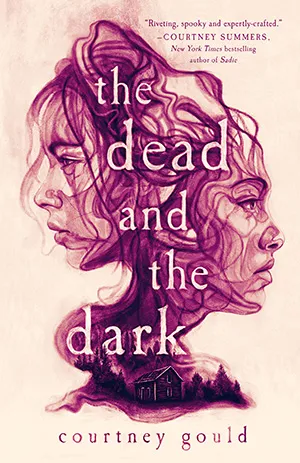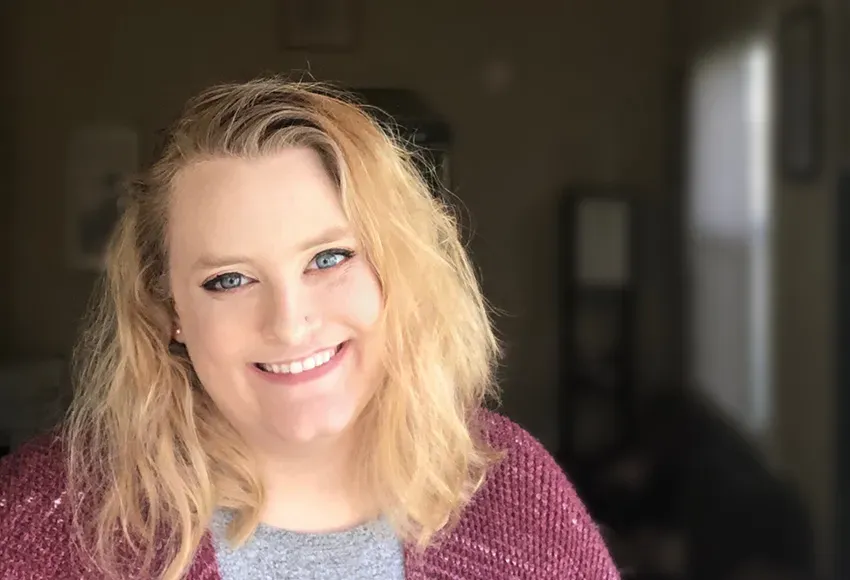What is Halloween without a good scare? For author and horror fan Courtney Gould, it's nothing. After reading her debut novel, The Dead and the Dark, for our SGN Halloween book club, I decided to sit down with Gould and discuss what inspired her to write such a chilling novel.
The Dead and the Dark tells the story of Snakebite, Oregon, from the dual perspective of Logan and Ashley, two very different girls working together to uncover the dark and haunting mysteries that are terrorizing their small town.

The Pacific Northwest and its influence
The idea for the book first came to Gould when she was visiting eastern Oregon. "I remember as we were driving through, we saw how few and far between the towns were... and how completely isolated it was," she said. "I'm from Salem, Oregon, and a lot of people who live in [the western part of the state] never go out to eastern Oregon because it's so remote. I was just out there and getting this vibe of all these communities that are so isolated and so cut off, and I wanted to use them as a setting.
"I felt like there was such a specific atmosphere: little towns that have a specific culture, feel very loyal to each other, and are very skeptical of people coming through, because they feel there's no reason for people to be out there unless they live there."
After visiting eastern Oregon, she knew her book had to be set somewhere in the Pacific Northwest. "I truly think the Pacific Northwest is the most beautiful place in the country. It is so gorgeous, and you have access to so many places. ...I think the other fun thing about the PNW is that it's empty. There's a lot of very isolated places here as well."
For Gould, the setting was a way to explore some of the dichotomies of the region. "We always think about Seattle and Portland as very progressive cities, but a lot of the smaller towns in Oregon and Washington are still very conservative. They can be hostile places for queer youth to grow up, and having that sort of dichotomy in my home territory has informed a lot of what I do."
Growing up in western Washington and Oregon, she saw the ways communities and levels of tolerance shift the further east you travel. "I always thought, you know, growing up in Salem and then moving to Tacoma, that they were more progressive cities. But I had family in bordering small towns, and you can feel that shift when you go from one town to another. You can feel that now this is a place where you have to meet a certain expectation, and you have to be a certain way, and you can't push outside of that, because everybody knows everything about everyone. Even if you're in one of the most progressive states in the country, you can't get outside of that need to please your community."
The haunting realities of small-town homophobia
With the backdrop of an isolated community also comes the inevitable experiences of homophobia. Unlike many LGBTQ+ authors, Gould decided not to shy away from these experiences.
"I put a content warning at the beginning of the book that there are a lot of depictions of homophobia. That's something I was happy my publisher allowed me to [do]. It is something that I think people need to be prepared for. This book was about what it's like to be a queer person growing up in rural America, returning to your hometown [there], and trying to fit in. It was very much about who's allowed to call some places home and who isn't. Even if they've grown up there, even if they lived there their whole life, they're not allowed to call some places home, because they don't fit in there, they don't fit the mold."
She acknowledges that for many, reading is a form of escapism. Experiencing real terrors, like homophobia, in a horror novel might not be for everyone. "There are some people who don't want to read books with those depictions of homophobia, and that's valid. But I don't think I would have been able to explore the themes of grief and loneliness without talking about how that was sort of inherent with being a queer person growing up in a small town."
Beyond ghosts and horror
Grief and loneliness play themes in the novel and breathe life into the ghosts haunting the pages. "Ghosts have always been intriguing to me because I feel like they're almost always a metaphor for something else," Gould said. "I wanted to explore this idea of grief, anger, and loneliness through the lens of a paranormal investigation. To solve the mystery of why people are seeing ghosts in Snakebite, they have to sort of unravel what would cause the ghosts, what it represents, and what is making it so they can't leave.
"That's the thing I wanted to dig into. I didn't want it to be a simple monster-hunting or problem-solving book. I wanted to get to the core of what made this town generate something that's killing, what made this town generate these ghosts, what is it they want?"
From the beginning, Gould knew she wanted to write a horror story. "I love horror so much. I think that ...you can put so much human emotion into horror. There's fear, but to make the fear striking, there also has to be an element of love and levity and joy. There's an opportunity to give your characters so much depth, because horror comes from what your human characters are most afraid of. They want what they're too afraid to go for. Plus I just really love scaring people."
She plans on sticking with the genre for all of her future projects, including her newest novel, Echo Sunset, which will be coming out in 2022. "It is another speculative YA thriller with a lesbian main character, and it also takes place in the desert," she laughed.
While there seem to be many similarities between The Dead and the Dark and Echo Sunset, the latter will explore different themes and reach new depths of emotion. "It's a lot more introspective. Where The Dead and the Dark is an exploration of homophobia and small-town bigotry, Echo Sunset is an exploration of grief and family and the ways that we... think that we have a lot of time, and then when we're out of time, it's too late to do anything about it."
LGBTQ representation
Aside from horror, another theme Gould plans on sticking with for all of her future projects is LGBTQ+ representation. "I definitely will [continue to center LGBTQ+ characters]. I don't know if I'll continue to put homophobia front and center, because that is taxing, and I don't want that to be something that my work is always associated with. I don't think that is the extent of the queer experience."
"As a lesbian," she added, "I always write lesbian protagonists, and the romances in my books are always female/female. Straight people are side characters only."
Writing LGBTQ+ characters is a way for her to center experiences often cast aside or overlooked in YA fiction.
"I remember when I was growing up, I had nothing in terms of queer representation," Gould said. "I didn't have any characters that were like me. It's not like that made it so I didn't know who I was, but it did make it so I didn't feel like there were a lot of options for me. I didn't know what my life would look like.
"The only lesbians I saw anywhere just had a tragic love story that didn't go anywhere. It just felt a little bit hopeless, and I know that a lot of other people in the queer community feel the same way. There wasn't a blueprint for how to go forward. There wasn't an idea of what our love stories or even our lifestyles could look like, and it makes it difficult when you're trying to navigate the world, and you don't know what to look for.
"Growing up, my friends who were straight had all of these different boyfriends and things like that, and it just felt like there was such a clear map of what love looked like for them, and I just never felt like I had the same thing."
Influences
Despite growing up with a lack of LGBTQ+ representation in the media, Gould still finds that her work is influenced by the movies, TV shows, and books that she loves to consume. When coming up with the main characters, she decided to borrow traits from one of her favorite TV shows.
"Logan and Ashley, the protagonists of the book, were kind of inspired by Betty and Veronica from Riverdale. So was their dynamic, sort of insider/outsider, the new person in town who is shaking things up versus the person who's lived there her whole life and feels like an integral part of the community. I wanted a romance that [went from] enemies to lovers, like two completely different worlds' vibes, where they have to work together because they each have half of what you need to solve the mystery.
"I am a big fan of Riverdale, unfortunately. I love it so much. So I wanted to take this pairing and go deeper with it and do something I wished I had seen in the show. From there, I sort of got my inspiration."
Her favorite actors also inspired some of the physical descriptions of the characters. "I recently, as in a year ago, watched The Wilds on Amazon Prime, and Mia Healey would play Ashley. She was so good in that show. I loved her. I would have her play Ashley. I got the essence of Ashley from her performance," she laughed.
Other characters inspired by real-world actors are Ashley's mom, who Gould says would be played by Reese Witherspoon in her ideal film adaptation, because "she has that PTA vibe," and Logan's dad Brandon would be played by Michiel Huisman from The Haunting of Hill House.
The Dead and the Dark pulls all the best elements from classic horror stories: suspense, emotion, and powerful metaphors. The novel sucks readers in from page one, possessing them to continue until you have all the answers. Readers beware! Once you pick the book up, you won't be able to put it down. Gould has created a horror classic that will continue to twist and turn in my nightmares.


